You may be consciously watching your diet, giving up sodas, ice cream, bacon and eggs, and dutifully resigning yourself to merely eating the “right” kinds of food. And yet, in spite of your painful sacrifices, you may still be mysteriously gaining weight and adding on those unrelenting pounds.
You ask yourself why this is so. You may as well be gorging yourself on chocolate bars and huge slabs of steak and rich mounds of mashed potatoes, considering that you are still gaining weight. The answer may well be in the kind of “healthy” food that you are eating.
Many supposedly healthy foods when carefully analyzed, are in fact, not that healthy at all. Instead of helping us slim down, these seemingly innocent snacks turn off our body’s fat-burning hormones, such as the human growth hormone (HGH), glucagon, thyroxine, testosterone and adrenaline, and cause us to gain weight instead. Granola bars, cereals, rice cakes, bran muffins and dried fruit are but a few of these deceptive and misleading “healthy” options.
Granola
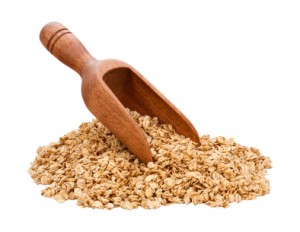 Granola intensive products, such as granola bars and cereals for example, are popularly used by many diet buffs for what they believe to be a healthy and fat-burning snack. Oftentimes, the relative “plainness” and seemingly “natural” and “unprocessed” attributes of granola make it look like a much better option than other foods which are obviously swimming in oil or combined with a whole plethora of preservatives.
Granola intensive products, such as granola bars and cereals for example, are popularly used by many diet buffs for what they believe to be a healthy and fat-burning snack. Oftentimes, the relative “plainness” and seemingly “natural” and “unprocessed” attributes of granola make it look like a much better option than other foods which are obviously swimming in oil or combined with a whole plethora of preservatives.
However, this isn’t actually the case as an excess of granola, in whatever form, will, in fact, cause you to GAIN weight instead of LOSING it. Don’t be fooled by the multitude of healthy-sounding buzz words that are usually attached to granola, such as “whole grain” or “wheat”. Though these foods are healthy for your body, they shouldn’t be used to create the illusion that granola as a snacking alternative can be consumed in unlimited amounts without suffering any bodily consequences or putting on excess pounds.
Unfortunately, most of the time, the process in which granola, especially store-bought granola, is made involves mixing it with unhealthy ingredients, such as oil to give granola its crispness, as well as the addition of sugars and sweeteners to add that little boost in taste. High insulin levels from sugars cause glucagon and HGH levels to go down correspondingly, thereby reducing the body’s efficiency to burn fat. Aside from this diminished efficiency, a single serving of granola can contain more than 500 calories, much more than what diet-conscious eaters might have thought it had.
Here’s a label of a granola product –
As with all things, moderation is key, and if you can’t seem to give up snacking on granola, then eat it with restraint and in the proper proportions. You could even make your own homemade granola so that you have a better idea of what goes into your food.
Remember that most of the time, homemade is better than manufactured goods, and factory-produced granola is practically just junk food disguised as a health snack. At the end of the day, do not think that granola gives you the license to eat as much of a food as you like, because, more often than not, these supposedly healthy foods are actually made through very unhealthy processes.
Dried Fruit
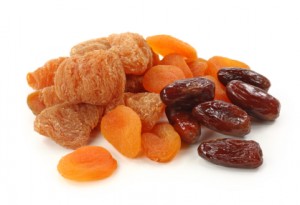 When it comes to dried fruit, the thinking is simple enough. “Dried fruit? Well, it came from actual fruits, which everyone knows is healthy and good for you, so dried fruit must be good for me, too, right?” It might surprise you, but the answer is actually a resounding NO. Due to the process of making dried fruits, dried fruits will actually be denser than its regular, raw counterpart, meaning that they will contain more calories per serving when dry rather than fresh.
When it comes to dried fruit, the thinking is simple enough. “Dried fruit? Well, it came from actual fruits, which everyone knows is healthy and good for you, so dried fruit must be good for me, too, right?” It might surprise you, but the answer is actually a resounding NO. Due to the process of making dried fruits, dried fruits will actually be denser than its regular, raw counterpart, meaning that they will contain more calories per serving when dry rather than fresh.
Dried fruits provide anywhere from five to eight times more calories than raw fruit. In addition to this, dried fruits are also chock full of preservatives such as sulphur dioxide, which is actually a pollutant that acts as a detriment to, not only your weight, but your bodily health in general, by causing respiratory problems. Also, some dried fruit companies and brands will actually add more sugar or sweeteners to their product, making it tastier and more addictive while their consumers still think that it’s a wholly natural and healthy food.
It isn’t a surprise then that, because of the misconception of dried fruits being completely healthy for you, combined with the fact that dried fruits are so small, tasty, and easy to eat and snack on throughout the day, eating too much dried fruit will make you gain more weight instead of losing it. Raisins and fruit cocktails are easy to eat and do not make you feel guilty for eating a lot of it, which is why it is such a threat to your goal of weight loss.
Don’t be immediately fooled by seeing fruits on the packaging or in the label and automatically think that eating it is good for you. No matter what you eat, losing weight is all about managing the calories that you put in your body, so always be alert as to how many calories the dried fruits you eat actually have and if they’re a more healthy alternative to regular, fresh fruit.
Cereal
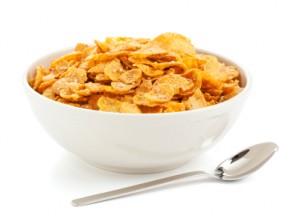 Breakfast truly is the most important meal of the day, as it provides you with most of the energy that you will need to start your day, as well as helping establish regularity in your metabolism. As such, it is also very important to wisely choose what to eat for breakfast, and more often than not, the usual choice is a bowl of cereal.
Breakfast truly is the most important meal of the day, as it provides you with most of the energy that you will need to start your day, as well as helping establish regularity in your metabolism. As such, it is also very important to wisely choose what to eat for breakfast, and more often than not, the usual choice is a bowl of cereal.
However, despite the numerous commercials proclaiming the myriad health benefits of cereal, such as how it can help children grow and develop physically and even emotionally, and how it is necessary in order for you to start your day the “right” way, cereal can actually cause you to start gaining weight instead of losing it.
Fast-digesting carbohydrates from cereal produce a spike in insulin levels, again disrupting the action of fat-burning hormones. In addition, cereal production usually goes through the same processing methods that granola products undergo, meaning that even though it may be initially healthy, consisting of foods such as whole grain, it is eventually introduced and mixed with preservatives, oils, and sugars.
This might be even truer when it comes to cereal bars, as the concentration of saturated fats and other sugars are usually more intense on a per serving basis. Thus, it is always advisable to look at the nutrition chart before eating cereal or a cereal bar.
Eating “kid” cereals, referring to cereals which are marketed towards children and contain high amounts of sugar and sweeteners, and putting too many seemingly healthy add ons, such as fruits and nuts, which, despite their fiber and protein benefits, actually contain high amounts of calories, should also be taken in consideration.
The artificial coloring in addition to synthetic vitamins that are present in store-made cereal actually make it harder for your body to absorb the supposed nutrients and minerals that cereal has to offer. In effect, these purportedly beneficial components are rendered useless to your body, and are ultimately treated as toxins that should be flushed out of your system. What some might consider worse, these toxins may even linger in your system longer, causing you to retain weight.
Bran Muffins
 On too many occasions, bran muffins seemed like the answer to countless dieting-related prayers. One could indulge oneself and eat a muffin without needing to feel guilty about cheating on one’s diet, because, since it is made of bran, whole grains, and contains fiber. Seemingly, the bran muffin perfectly fits in with diets and nutrition plans. There is even a rich variety of bran muffins to choose from, including blueberry, raisins, banana, and other fruit flavors, all made to satisfy taste buds while keeping your weight in check. Unfortunately, as the old adage goes, “If something is too good to be true, then it usually isn’t true” and bran muffins are no exception.
On too many occasions, bran muffins seemed like the answer to countless dieting-related prayers. One could indulge oneself and eat a muffin without needing to feel guilty about cheating on one’s diet, because, since it is made of bran, whole grains, and contains fiber. Seemingly, the bran muffin perfectly fits in with diets and nutrition plans. There is even a rich variety of bran muffins to choose from, including blueberry, raisins, banana, and other fruit flavors, all made to satisfy taste buds while keeping your weight in check. Unfortunately, as the old adage goes, “If something is too good to be true, then it usually isn’t true” and bran muffins are no exception.
The fact of the matter is, bran muffins are actually just tiny, round slices of cake. Though bran muffins may look like a healthy option to eat, with its supposedly natural and unprocessed ingredients made out of grains and fruits, a lot of bran muffins also contain large servings of fats, butter, and oils used to make them. The high sugar content of bran muffins also actually counteracts the supposed beneficial effects of whole grain by encouraging fat storage and hampering fat-burning hormones from doing their job.
Another issue encountered with bran muffins is the uneven proportions they contain. Aside from the fact that it is already a naturally dense product, packed with good stuff such as fiber but with unhealthy fats as well, meaning that it has more calories per serving than other food, the sizes that bran muffins are made in are astounding! Most of the time, bran muffins are humungous, larger and heavier than a fist, complete with an overflowing muffin top.
As with any other food you consume, one should be alert as to whether the bran muffin being eaten is on the healthy side, with low amounts of saturated fat and oils, or on the more decadent side, weighing heavier than a small brick and jampacked with numerous fats, oils, and sugar. Don’t look at bran muffins as an everyday part of your diet, but, rather, as a healthy desert to be enjoyed once in a while.
Rice Cakes
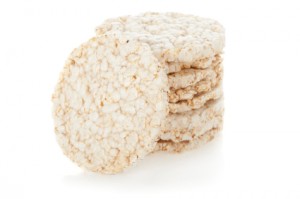 If you want a light, preservative-free snack that makes you feel like you’re eating healthy, then rice cakes would seem to be a good choice for you. In fact, rice cakes are often a staple choice among many dieters and weight loss enthusiasts, due to their low calorie and fat count. However, the very characteristics that make rice cakes seem like such a beneficial and healthy treat may also lead to it becoming a deceptively weight-gaining and ultimately unhealthy food.
If you want a light, preservative-free snack that makes you feel like you’re eating healthy, then rice cakes would seem to be a good choice for you. In fact, rice cakes are often a staple choice among many dieters and weight loss enthusiasts, due to their low calorie and fat count. However, the very characteristics that make rice cakes seem like such a beneficial and healthy treat may also lead to it becoming a deceptively weight-gaining and ultimately unhealthy food.
Though rice cakes have remarkably low counts of fat and calories, they also have equally low amounts of fiber and protein. The almost non-existent nutritional value present in rice cakes will not fulfill your appetite and might not satisfactorily remove the sensation of hunger that one might feel, in turn causing you to eat more rice cakes or other foods in an effort to become full, thus adding more calories consumed in your system. In fact, the sugar and salt present in rice cakes might even cause you to feel hungrier than ever.
Rice cakes may also cause your blood sugar levels to increase, due to rice cakes registering a high Glycemic Index (which is basically a measure of how fast a certain food will cause your blood sugar to rise). This increase in blood sugar will hinder your body’s ability to burn fat, in effect causing your body to store more fat, thus making you gain weight instead of losing it.
Flavored rice cakes also happen to be very high in sodium and other preservatives while still offering minimal nutritional value. As such, it is advisable to stay away from flavored rice cakes.
You now KNOW what’s stopping you from staying healthy and even losing weight. You also know a few tips on what to look out for when you are buying foods.
When you are ready to take your health to the next level, by being more aware of the nutrition of the foods, alkalize your body, just click the next page button below and you’ll discover the 3 Alkaline Secrets to Boost Your Health & Body!
About the Author:
Emma Deangela is the best selling author of The Alkaline Diet Program and 80/20 Fat Loss. She has helped over tens of thousands of men and women to lose weight and transform their health with sound nutrition advice.
Which wonderful friends in your life would appreciate this information about these 5 sneaky ‘health’ foods? Are they aware of this information about their food?
Please help them by sharing this eye-opening article with each of them using any of the social media and email buttons below.
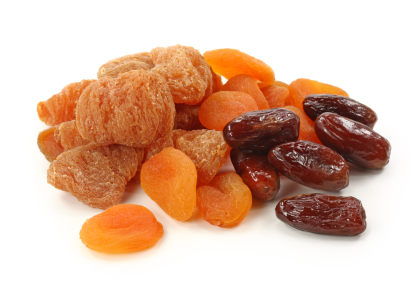
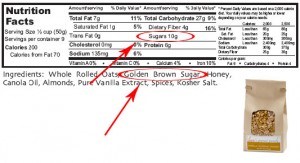


Leave a Reply